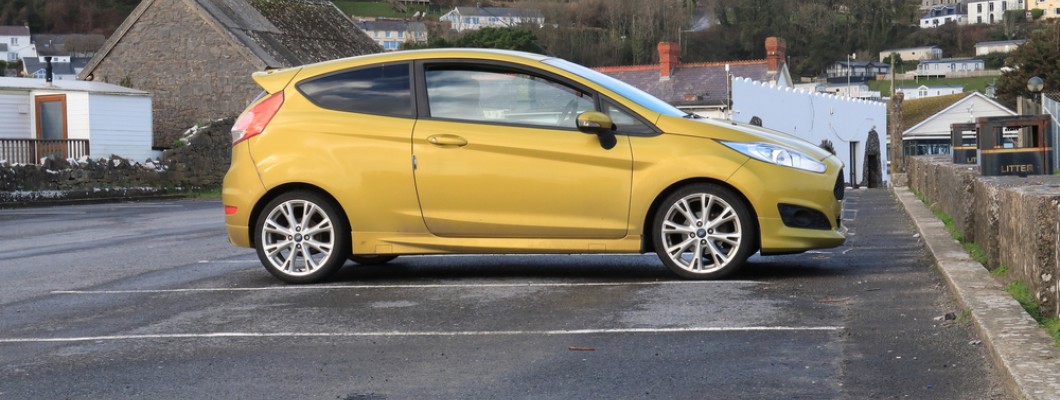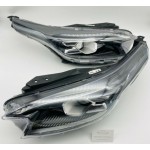
Introduction
The Ford Fiesta is an automotive icon that has left an
indelible mark on the world of compact cars since its inception. Over the
decades, it has evolved into a versatile, stylish, and practical vehicle that
has captivated drivers worldwide. In this 800-word exploration, we will delve
into the fascinating history of the Ford Fiesta, tracing its origins,
evolution, and enduring legacy in the automotive industry.
Origins (1976-1983)
The story of the Ford Fiesta begins in 1976, when Ford
introduced the first-generation Fiesta. Designed to be a small, fuel-efficient,
and affordable car, it was initially intended as a response to the oil crisis
of the 1970s. The Fiesta was a departure from Ford's larger car line-up,
representing a shift toward compact cars and European-inspired design.
The first-generation Fiesta was well-received for its
efficient use of space, with a front-wheel-drive layout and transverse engine
that maximized interior room. It offered a variety of engine options, including
the fuel-efficient Kent engine and the sportier "S" model with a
1.6-liter engine, laying the foundation for the Fiesta's dual identity as a
practical daily driver and a fun-to-drive compact car.
The Fiesta quickly became a popular choice in Europe, and by
1977, it had made its way to North America, where it was embraced for its fuel
efficiency and affordability during a period of rising gasoline prices.
Evolution (1983-1996)
The second-generation Ford Fiesta, introduced in 1983,
continued to build upon the success of its predecessor. This model featured a
more modern and aerodynamic design, incorporating rectangular headlights and a
sleeker profile.
During this era, Ford expanded the Fiesta line-up to include
a sportier XR2 model, which became popular among enthusiasts. The XR2 boasted a
1.6-liter engine and sport-tuned suspension, emphasizing the Fiesta's potential
for spirited driving.
In the 1980s, the Fiesta established itself as a competitive
rally car, winning numerous championships and further solidifying its
reputation for performance. This era marked the Fiesta's transition from a
practical economy car to a versatile platform suitable for various driving
enthusiasts.
Global Expansion (1996-2002)
The third-generation Fiesta, introduced in 1996, was a
global effort, with development and production taking place in various regions,
including Europe, North America, and South America. This generation aimed to
unify the Fiesta's design across markets while maintaining its compact and
practical nature.
During this era, Ford continued to improve the Fiesta's
safety features and technology, making it a more attractive choice for
consumers seeking modern amenities in a compact car. It was also during this
time that Ford introduced the first diesel-powered Fiesta, emphasizing the
importance of fuel efficiency and environmental considerations.
The Fiesta's appeal was further enhanced by its
affordability and low operating costs, making it a practical choice for a wide
range of drivers. It maintained its reputation as a reliable and economical
option for daily commuting.
Modernization and Adaptation (2002-2017)
The fourth-generation Fiesta, introduced in 2002, marked a
significant step forward in terms of design and technology. It featured a more
contemporary look, with a prominent front grille and a focus on aerodynamics.
This generation also introduced the Fiesta ST, a high-performance variant
catering to enthusiasts seeking more power and sportier driving dynamics.
The introduction of advanced safety features, such as side
airbags and stability control, reflected the industry's growing emphasis on
occupant protection. Additionally, Ford began incorporating more technology
into the Fiesta, including features like Bluetooth connectivity and advanced
infotainment systems.
During this era, Ford also explored alternative powertrains
for the Fiesta, offering a range of efficient gasoline and diesel engines. This
diversity in engine options allowed consumers to choose a Fiesta that best
suited their needs, whether it was focused on fuel efficiency or performance.
The Global Car (2017-Present)
The fifth-generation Ford Fiesta, introduced in 2017,
represents a continued commitment to global markets while maintaining the
Fiesta's core attributes. This model features a more refined design with
enhanced interior quality and technology.
One significant change is the discontinuation of the Fiesta
in the North American market, reflecting shifting consumer preferences towards
larger vehicles. However, the Fiesta remains a popular choice in Europe and
other regions where compact cars are highly sought after.
In response to changing environmental concerns, Ford
introduced hybrid and mild-hybrid variants of the Fiesta, highlighting the
company's commitment to reducing emissions and improving fuel efficiency.
Conclusion
The Ford Fiesta is not just a car; it's a testament to
adaptability and the enduring appeal of the compact car segment. From its
origins as an economy car during the oil crisis of the 1970s to its status as a
global compact car icon, the Fiesta has evolved to meet changing consumer
demands and industry standards.
Throughout its history, the Fiesta has consistently offered practicality, affordability, and, when desired, an engaging driving experience. It has played a pivotal role in Ford's global line-up and has left an indomitable mark on the world of compact cars. As the automotive landscape continues to evolve, the Fiesta's legacy as a versatile and attractive compact car option remains strong. It embodies the idea that a small car can be both practical and enjoyable to drive, making it a beloved choice for drivers worldwide.





























Leave a Comment